Rocket Lab sends The Mountain God Guards soaring
‘The Mountain God Guards’ mission lifted-off from Rocket Lab Launch Complex 1 in Mahia, New Zealand at 15:31 UTC on June 11th to deploy a single synthetic aperture radar (SAR) imaging satellite named QPS-SAR-11 (nicknamed YAMATSUMI-I for the Japanese god of mountains) to a 575km circular Earth orbit for iQPS.

The mission is the latest in a series of dedicated Electron launches for iQPS to develop its Earth-imaging constellation providing high resolution images and Earth monitoring services globally.
With this mission, Electron has now deployed half of iQPS’s constellation of satellites operating on orbit. These include the ‘The Moon God Awakens’ that was successfully launched in December 2023; and ‘The Lightning God Reigns’, ‘The Sea God Sees,’ and now ‘The Mountain God Guards,’ each deployed in the first half of 2025.
Another four dedicated missions with iQPS-SAR satellites are scheduled to launch on Electron across the remainder of this year and 2026, making Rocket Lab the most relied-upon launch provider to accelerate the build out of iQPS’s constellation with repeatability and precision.
SFL Missions Inc. included in ESA contract for a Moon mapping study
SFL Missions Inc. is a member of the team led by NUVIEW GmbH that has been contracted by the European Space Agency (ESA) to conduct a Pre-Phase A study, within a new scheme for Small Exploration Missions, for the Moonraker lunar mapping mission—the Moonraker satellite will carry a laser scanner to create a detailed elevation map of the Moon’s surface.
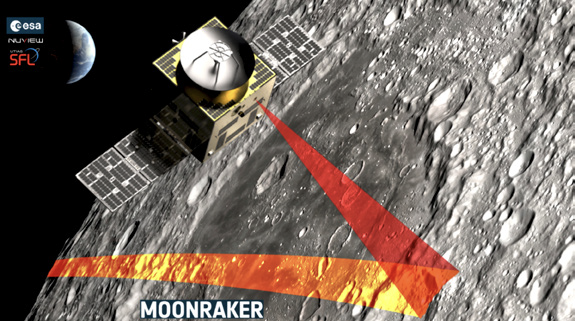
The Moonraker mission will consist of a single orbiter operating in a low-altitude polar orbit around the Moon. The orbiter will host a Light Detection and Ranging (LiDAR) payload to capture highly accurate elevation points of the terrain. These points will be used to generate 3D elevation models that will be relied upon to assess and select future landing sites.
Moonraker’s LiDAR data will also serve a broader scientific purpose, including scanning permanently shadowed regions for water ice and providing valuable insights into the Moon’s geological and interior composition. The Moonraker LiDAR will operator in two modes—one for broad-area scanning of the Moon’s polar regions and the other for high-resolution surveys of specific areas of interest.
The mission analysis evaluates possible launch options and trajectories for efficiently entering into lunar orbit, and it studies how the operational orbit parameters impact the spacecraft design and payload data collection. The system design focuses on payload accommodation, spacecraft layout, and sizing of the various subsystem components.
 In particular, the propulsion system is sized with the appropriate amount of fuel to complete the transit phase and then maintain the operational orbit while counteracting perturbations caused by the Moon’s irregular gravity field. Detailed mission and system requirements are also developed to guide future design phases for the project.
In particular, the propulsion system is sized with the appropriate amount of fuel to complete the transit phase and then maintain the operational orbit while counteracting perturbations caused by the Moon’s irregular gravity field. Detailed mission and system requirements are also developed to guide future design phases for the project.
NUVIEW GmbH of Berlin, Germany, serves as prime contractor for the Pre-Phase A study team, which includes several members in addition to SFL Missions. NUVIEW GmbH is a wholly owned subsidiary of NUVIEW Inc. which is developing the world’s first commercial space-based LiDAR constellation for 3D mapping of the Earth.
CubeSpace expands reaction wheel range with advanced microsat solutions,
slashing costs and lead times
CubeSpace (CS), a leading supplier of ADCS subsystems, has extended its range of flight-proven Reaction Wheels to include several MicroSat options, showcasing robust solutions that address critical industry needs for shorter lead times, increased affordability, and uncompromising reliability.
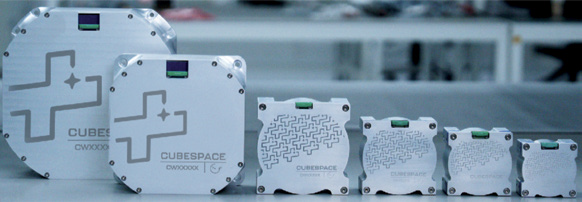 With more than a decade of flight heritage and more than 1,400 reaction wheels currently in orbit, CS continues to empower satellite manufacturers to go from order to orbit faster and more efficiently.
With more than a decade of flight heritage and more than 1,400 reaction wheels currently in orbit, CS continues to empower satellite manufacturers to go from order to orbit faster and more efficiently.
Reaction wheels are a traditionally complex and costly satellite subsystem, often plagued by long lead times. CS has disrupted this paradigm by leveraging its extensive experience and innovative design principles to offer a compelling alternative.
The CS MicroSat wheel range incorporates several novel features designed to meet the evolving demands of satellite manufacturers:
Redundancy: All MicroSat wheels have full redundancy on motor windings, hall sensors, and all electronics, offering unbeatable reliability.
Ultra-low Microvibration: All wheels have built-in dampers, and are available in a pyramid configuration with additional dampers, ensuring extremely low microvibration for precision EO payloads.
Precision Low Speed Control: Integrated high-resolution encoders ensure accurate speed control to near-zero speeds.
Custom-built In-house Motors: In-house designed and manufactured motors, scaled exactly for each size reaction wheel, coupled with bearings and lubrication from industry-leading suppliers, ensure best-in-class mechanical performance.
Design for manufacturing: Industrializing processes incorporating Lean Manufacturing principles, coupled with redundant supply chains, ensure always-on-time delivery and building to stock.
Rigorous Qualification: All wheels are laser-balanced, vibrated, and shock-tested on in-house equipment, and Kistler table verified to monitor any changes in balance and vibration, ensuring optimal performance in orbit regardless of launcher.
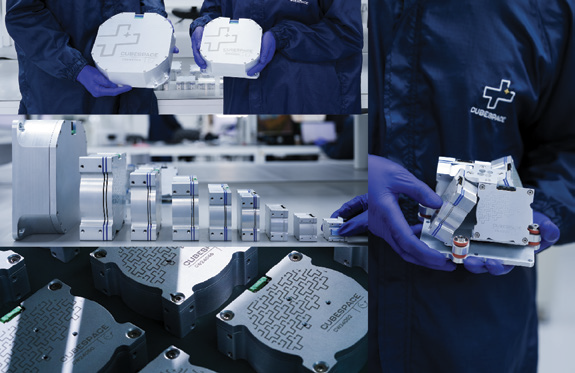 CS’s journey began in the demanding nanosatellite market, where it launched hundreds of its reaction wheels and actively collaborated with customers, many of whom were building satellites for the first time.
CS’s journey began in the demanding nanosatellite market, where it launched hundreds of its reaction wheels and actively collaborated with customers, many of whom were building satellites for the first time.
This unique, hands-on experience provided invaluable direct feedback on performance, integration processes, and in-orbit commissioning. By stepping into the shoes of its customers, CS was able to implement iterative design, process, and documentation improvements, resulting in an incredibly mature and refined product line, supported by robust documentation and support infrastructure.
Beyond technical superiority, CS offers significant advantages:
Exceptional Affordability: CS reaction wheels are up to half the cost of competitors, making them an incredibly compelling option for satellite manufacturers.
Unmatched Lead Times: Standard lead times are an impressive 12 weeks, with a proven monthly production cadence of 160 wheels p/m and a ramp-up capacity to 320 wheels p/m.
Accelerated Order-to-Orbit: Through a scalable design, partial stockholding, and pre-built subassemblies, CS empowers customers to deploy their satellites faster than ever before.
At CS, ‘ready for space’ isn’t a slogan, it’s a promise backed by discipline. The company already meets the requirements of ISO9001 and is actively working towards AS9100 certification. This commitment ensures that all products are designed and manufactured in line with industry best practices, guaranteeing robust and repeatable quality.
CubeSpace (CS) is a globally recognized leader in Attitude Determination and Control Systems (ADCS) and has provided 350+ turn-key control solutions and 4,000+ products, including Sun Sensors, Star Trackers, Magnetometers, Magnetorquers and Reaction Wheels.
Supporting more than 250 customers in more than 30 countries, CS will be unveiling a “Made in the US” option in the coming months, providing even greater flexibility and support for its North American customers.
Leading in ADCS innovation and cutting-edge solutions, CS is a trusted supplier to major space agencies, as well as a majority of constellation primes and ambitious commercial satellite builders. Supporting customers from design through to commissioning, CS is setting a new gold standard for control systems across the globe.
www.cubespace.co.za
SWISSto12 has released their HummingLink-SOTP user terminal for continuous GEO connectivity
SWISSto12, the developer of the Hummingsat GEO satellite, recently released their HummingLink-SOTP (SATCOM-On-The-Pause) user terminal.
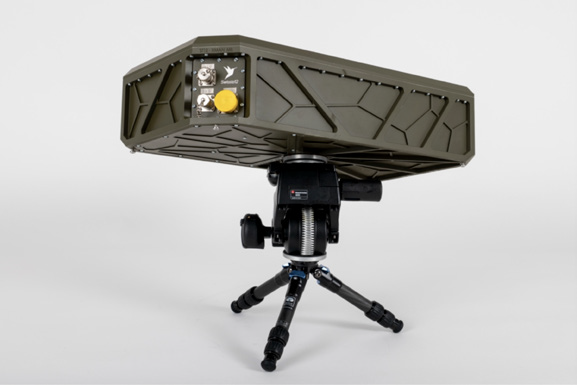 This new type of terminal for GEO connectivity combines a small form factor, high portability, quick deployment as well as high-throughput.
This new type of terminal for GEO connectivity combines a small form factor, high portability, quick deployment as well as high-throughput.
HummingLink-SOTP leverages SWISSto12’s proprietary Additive Manufacturing processes to produce ultra-lightweight, high-gain antennas in X-, Ku-, and Ka-band. HummingLink-SOTP integrates these antennas together with state-of-the-art RF electronic circuits to enable the highest throughput out of highly portable and compact systems. These terminals focus on GEO SOTP connectivity and target a sub-50 cm size.
HummingLink-SOTP is first released in Ka-band (HummingLink-SOTP-Ka), and in different gain, polarization, and frequency configurations. The terminal is designed for ultra-fast deployment. HummingLink-SOTP terminals can integrate a modem and can be equipped with auto-pointing systems. Terminals in X-band (HummingLink-SOTP-X) and Ku-band (HummingLink-SOTP-Ku) are available for pre-release demos and will be available for order later in 2025.
HummingLink-SOTP is a compact, highly portable yet highly performing SATCOM product that answers the requirements of operators for systems that can be rapidly deployed by a single person to establish robust, high throughput connectivity over GEO,” said Emile de Rijk, CEO of SWISSto12
Despite the small size of the HummingLink-SOTP terminals, the antenna arrays that we integrate into our terminals are extremely efficient and highly differentiated when compared to traditional dish antennas, which require larger surface areas to reach similar performance. We combine this with an optimized system design and industrial approach to provide a cost-competitive solution,” said Mathieu Billod, Head of Terminals at SWISSto12
Open Cosmos + Astroscale partner on £5.15 million UK Defence contract for Orpheus mission to enhance SSA
Open Cosmos and Astroscale Ltd. have been awarded a contract worth £5.15 million by the UK’s Defence Science and Technology Laboratory (Dstl), an executive agency of the Ministry of Defence (MOD) dedicated to science and technology in the defence and security sectors, via BAE Systems, as the Dstl Serapis Framework lead.
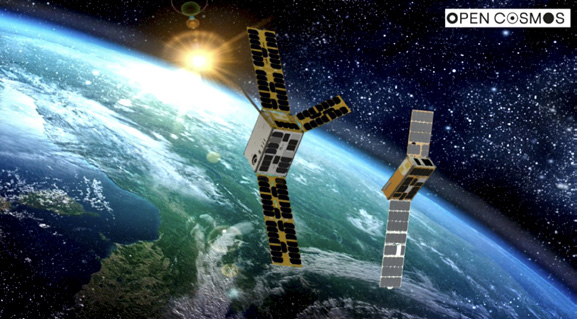 As global reliance on space infrastructure grows, so do the threats posed by space weather, adversarial actions, and orbital congestion. As a critical step in strengthening the UK’s capabilities in space, the Orpheus mission objectives are to enhance our understanding of space weather and improve space situational awareness, advancing global initiatives toward a joint space architecture.
As global reliance on space infrastructure grows, so do the threats posed by space weather, adversarial actions, and orbital congestion. As a critical step in strengthening the UK’s capabilities in space, the Orpheus mission objectives are to enhance our understanding of space weather and improve space situational awareness, advancing global initiatives toward a joint space architecture.
A recent Lloyd’s of London report highlights that an extreme space weather event, such as a severe solar storm, could result in global economic losses of up to $2.4 trillion, with disruptions to the ionosphere posing a significant threat to satellite communications, navigation systems, and critical defence infrastructure.
This fully funded project will run for three years, concluding in 2028, and will cover the complete lifecycle of the mission, from design to launch and operations. The contract award from Dstl was made under the Serapis framework.
 As geopolitical and environmental threats to space infrastructure rise, Orpheus will deliver crucial insights, safeguarding vital UK and allied operations against emerging challenges.
As geopolitical and environmental threats to space infrastructure rise, Orpheus will deliver crucial insights, safeguarding vital UK and allied operations against emerging challenges.
Open Cosmos is partnering with Astroscale UK to design and build two near-identical satellites that the company will operate for the mission.
The satellites will fly in formation to observe and collect critical data using in-situ and remote sensing techniques, to enable faster space-based data acquisition. The payloads designed to characterize the ionosphere are being developed by the U.S. Naval Research Laboratory, the University of Bath and Surrey Satellite Technology Ltd.
Dstl Chief Executive, Dr. Paul Hollinshead, said, “Changes in space weather can have a critical impact on satellites which provide navigation aids, telecommunications and data transmission. Sustained investment in space research in collaboration with our international partners strengthens the security of UK interests in space.”
Nick Shave, Managing Director of Astroscale UK, said, “The Dstl Orpheus mission is an important opportunity for Astroscale to demonstrate our capability to deliver innovative missions in the Defence arena and in support of national security. We have successfully demonstrated our space mission implementation capability during our ELSA-d mission in 2021, and the ADRAS-J close proximity inspection mission in 2024. We are pleased to contribute our space mission design, development, integration and operations experience to ensure a successful mission which will also demonstrate the UK’s value to international partner nations.”
Rafel Jordà Siquier, founder and CEO of Open Cosmos, said, “We are thrilled to partner with Astroscale on the Orpheus mission to enhance space domain awareness. Our advanced satellite solutions will provide the critical data needed to understand the ionosphere and protect vital space infrastructure. This mission exemplifies the power of collaboration in driving innovation and ensuring the security of our space assets.”



